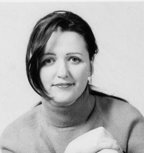Everyone has experienced muscle soreness or fatigue associated with exercise. For some, this may act as a deterrent from working out or participating in physical activity, but understanding how to prevent and treat those aches and pains can be the key to enjoying exercise and staying motivated in an exercise routine.
According to the American College of Sports Medicine, muscle fatigue and soreness, which occur a day or two after an activity, results from microscopic muscle or connective tissue damage. These aches and pains should be minor, and are simply an indication that the muscles are adapting to your fitness regimen. "Health and fitness professionals are the first line of defense for people misinformed about exercise," said Carol Torgan, Ph.D., FACSM. "It's really important they have the background knowledge to describe initial muscle pain and soreness so the person doesn't treat it as an obstacle to exercise."
According to Torgan, exercisers should not interpret muscle fatigue and soreness as being sorely out of shape. "Some people think they have no business exercising because exercise is painful," she said. "The soreness is there simply because your muscle is learning something new, and the benefits of exercise far outweigh any initial discomfort."
It's also important to keep in mind that gentle stretching helps to restore some flexibility. Massage may also offer some pain relief. Applications of creams and balms, such as AcheAway, as well as the use of ice and warm water can also provide relief. Products containing ibuprofen may also help to lessen the discomfort. It's a good idea to take it easy for a few days while your body adapts.
However, do not avoid physical activity because of muscle soreness. In fact, it's important to keep the muscles in motion with light exercise, which can also be beneficial as it helps to keep the muscles flexible and warm. If the pain persists, or if you have additional concerns, talk to your health care provider or fitness instructor for more information or advice.
Muscle cramps, intense, involuntary contractions of the muscle, often occur toward the end of a long workout or competition. Cramps are thought to stem from dehydration or electrolyte imbalances. But this is not always the case.
While athletes and exercisers often experience painful cramps, they are not the only ones. "Musicians often get cramps, but they do not have a large sweat loss," said Torgan. "Cramping is likely the results of using a muscle repetitively so that it becomes fatigued." This repetitive use may trigger abnormal neural activity that causes involuntary muscle contractions. While some unknown factors regarding muscle cramps remain, researchers believe that the main cause of muscle cramps is muscle fatigue.
There exists no real cure for muscle cramps. Still, there are things one can do to help alleviate the problem. Stretching regularly, eating a well-balanced diet, and staying hydrated can assist exercisers in being conditioned for exercise. When cramping does occur, it helps to hold the muscle in a stretched position until the cramp subsides. Although considered an urban-legend remedy, some athletes swear that drinking pickle juice or pinching the upper lip or nostril are an effective in alleviating muscle cramps.
If you experience any of the following symptoms, it is important to stop exercising immediately and seek the treatment of your physician:
1. Sudden, severe pain
2. Swelling
3. Inability to place weight on leg or foot
4. Extreme muscle fatigue or weakness
5. Inability to move a joint through its full range of motion
6. Visible dislocation or broken bone
7. Numbness or tingling - a possible sign of nerve compression
For any muscle pain or fatigue, the R.I.C.E. method, recommended by the American Orthopaedic Society for Sports Medicine, can help reduce damage and speed healing:
R - Rest: Stop what you are doing that is causing the pain. Rest the sore muscle group for a day.
I - Ice: Cold therapy helps reduce inflammation and the risk of further damage it can cause. Wrap ice, or an ice pack, in a towel and apply it indirectly to the affected area for 10 to 20 minutes, four to eight times a day.
C - Compress: Wrapping the injured limb in a snug elastic bandage can help to reduce swelling.
E - Elevate: Raise the injured limb above the level of the heart to reduce swelling.
Acheaway is now available for home use to soothe the aches and pains associated with arthritis, psoriasis, tired joints and sore muscles from an active lifestyle. Thousands have benefited from the pain relieving power of these safe, natural, non-prescription treatments.
Work at Home Freelance
In Celebration of Older Women
Pro Aging
Beautiful Forever
Living With Food Related Diseases
Wednesday, January 30, 2008
Handling Exercise-Induced Muscle Fatigue and Pain
Subscribe to:
Post Comments (Atom)



No comments:
Post a Comment